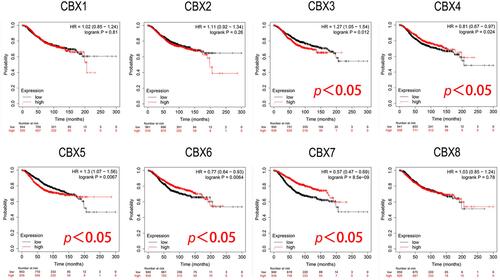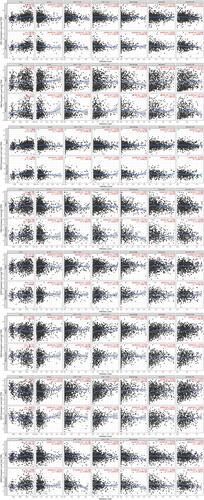Figures & data
Figure 1 The mRNA expression of CBX family proteins in different cancers in Oncomine. Red indicates increased expression and blue indicates decreased expression.
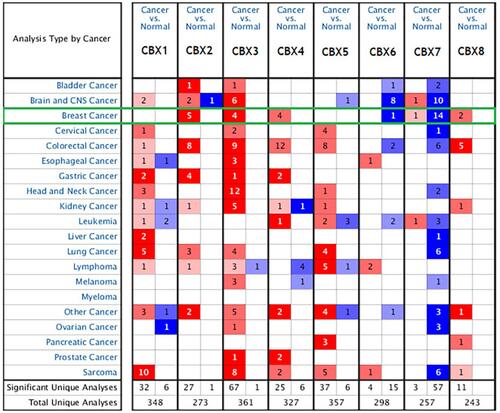
Figure 2 The mRNA expression of CBX family proteins in BC in GEPIA. Red indicates increased expression and green indicates decreased expression.
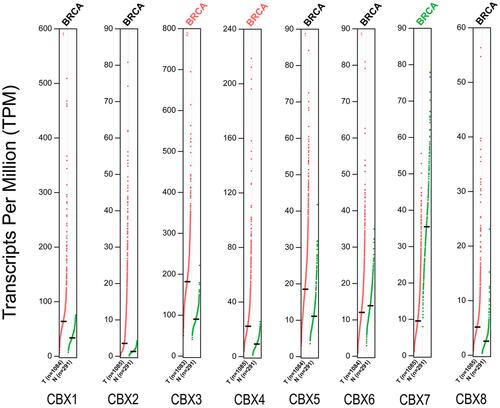
Figure 3 Correlation between CBXs expression and clinicopathological staging of BC in GEPIA. (A–H). Correlation between CBX1 (A), CBX2 (B), CBX3 (C), CBX4 (D), CBX5 (E), CBX6 (F), CBX7 (G), CBX8 (H) and clinicopathological staging of BC determined by GEPIA. CBX2 was highly correlated, followed by CBX1 also has a high correlation, while the remaining six groups were not significantly different.
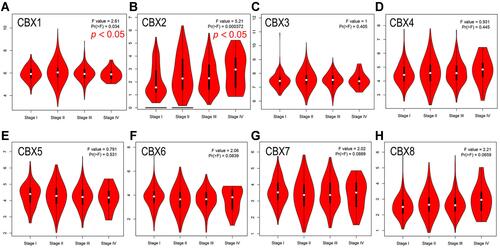
Figure 4 Prognostic evaluation of CBXs mRNA expression in BC patients (GEPIA). (B). High level of CBX2 mRNA expression in BC patients was significantly correlated with OS. (D). High level of CBX4 mRNA expression in BC patients was significantly correlated with DFS. CBX1 (A), CBX3 (C), CBX5 (E), CBX6 (F), CBX7 (G) and CBX8 (H) mRNA expression in BC patients were not associated with OS or DFS.
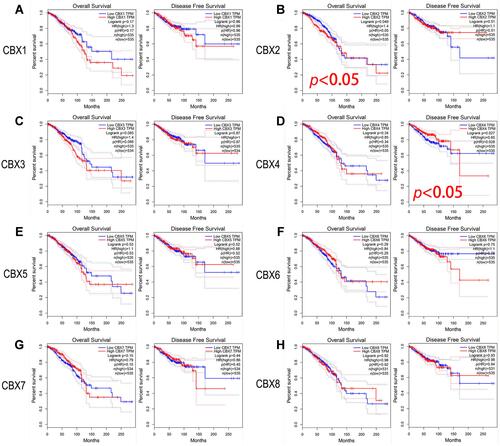
Figure 5 Prognostic evaluation of CBXs mRNA expression in BC patients (Kaplan-Meier plotter). High expression of CBX3/5 mRNA was significantly correlated with short OS, and high expression of CBX4/6 and CBX7 were significantly associated with long OS in BC patients.
